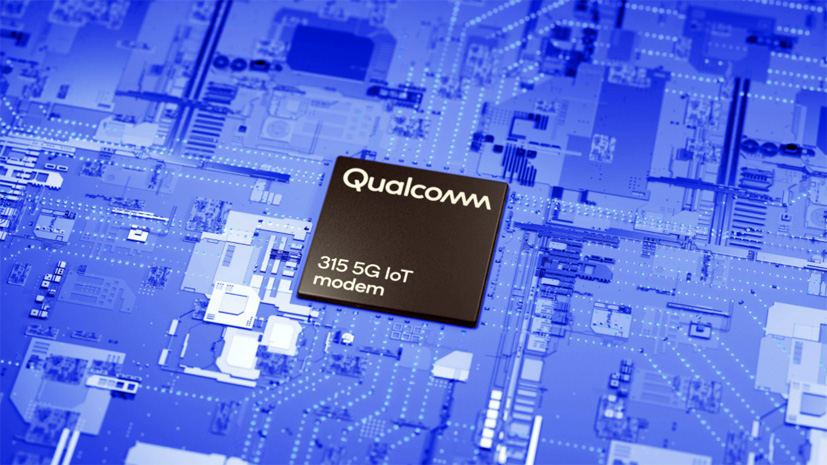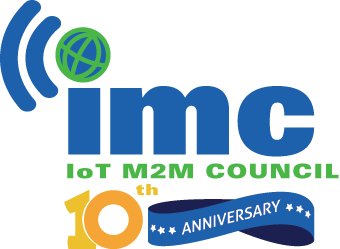Quectel and Telit back Qualcomm 5G IoT modem
- May 26, 2021
- Steve Rogerson

Quectel and Telit are supporting Qualcomm’s purpose-built IoT modem equipped with 5G connectivity and optimised for industrial applications.
The Qualcomm 315 5G IoT modem-RF system is a modem-to-antenna design to support the IoT ecosystem in building upgradeable LTE and 5G devices for IoT verticals, accelerate the adoption of 5G connectivity for IoT, and expand the overall opportunity for 5G in the IoT industry.
The needs of modern IoT include seamlessly transitioning wired factories to wireless with products capable of supporting LTE and 5G connectivity. The 315 5G IoT modem was designed with industrial and enterprise applications in mind, built with gigabit class performance, low-power and thermal-efficient capabilities to enable fast, powerful and high-performing IoT services.
The modem is intended to meet the needs of industry segments including retail, energy, automation and manufacturing, precision agricultural, construction, mining, and public venues.
“The introduction of the Qualcomm 315 5G IoT modem represents an important milestone that paves the way for bringing 5G 3GPP release 16 connectivity to the 5G IoT industry,” said Marco Contento, vice president at Telit. “This new system will serve a number of commercial and industrial use cases where until now there hasn’t been 5G connectivity available, in particular energy distribution, smart grid technologies, and industrial control and automation. And, because the modem also supports applications currently served by LTE networks, it provides customers with a future-proof path for 5G device migration.”
With the global expansion of 5G, the modem can serve the high end of IoT broadband modems, complementing Qualcomm’s existing portfolio of LTE IoT modems with a path towards 5G proliferation. Additionally, due to its reduced footprint and integrated RF front-end, this product expands the portfolio, purposely designed to provide pin-to-pin compatibility for LTE legacy modules. This provides such modules with the ability to upgrade with no changes needed to existing hardware, reducing development efforts, costs and providing a seamless transition from LTE to 5G.
“Qualcomm is continuously optimising and developing industry-leading technologies and modems ranging from the most power efficient NB-IoT to new products like the 315 5G IoT modem, purpose-built to bring 5G connectivity capabilities to IoT,” said Jeffery Torrance, senior vice president at Qualcomm. “We are pleased to unveil our new 5G IoT solution which will help stimulate and scale the 5G IoT industry and enable the transitions needed for Industry 4.0. This will help create long-lasting devices and promote growth and expansion in the 5G IoT industry, allowing seamless integration for customers utilising previous generations of connectivity.”
The modem supports global 5G NR sub-6GHz bands and operates in stand-alone (SA) only mode, with the capability to switch to LTE as needed, and can be deployed over private or public 5G networks, leveraging network slicing or in isolation. This is optimal for IoT applications that can be seamlessly integrated with existing Ethernet and wired technologies. The modem comes with extended life software and hardware maintenance and support, prolonging IoT devices for the duration of their life span. It should help accelerate the digital transformation of the 5G IIoT industry, proliferating 5G for IoT.
The modem is expected to be commercially available in the second half of 2021.
Quectel Wireless has announced the release of two 5G NR modules, the RG500S and RM500S, based on the Qualcomm modem. Both modules can support the building of dedicated 5G devices for various verticals including industrial IoT, retail, smart energy and private 5G networks.
“Quectel’s new family of 5G NR modules, the RG500S and RM500S, will utilise the Qualcomm 315 5G IoT modem to offer superior choice for 5G IoT applications,” said Patrick Qian, CEO of Quectel. “The two module series will cover 5G NR sub-6GHz bands in SA mode and LTE bands worldwide, enabling them to deliver high data rate, low end-to-end latency, and reliable connectivity to a vast range of IoT segments including industrial IoT, smart energy, private 5G networks and many others. The new modules are highly compatible with existing 5G and LTE modules, allowing customers to accelerate their 5G designs with fast time to market. We are very proud to work with Qualcomm as we continue to enable the growth of the internet of things.”




